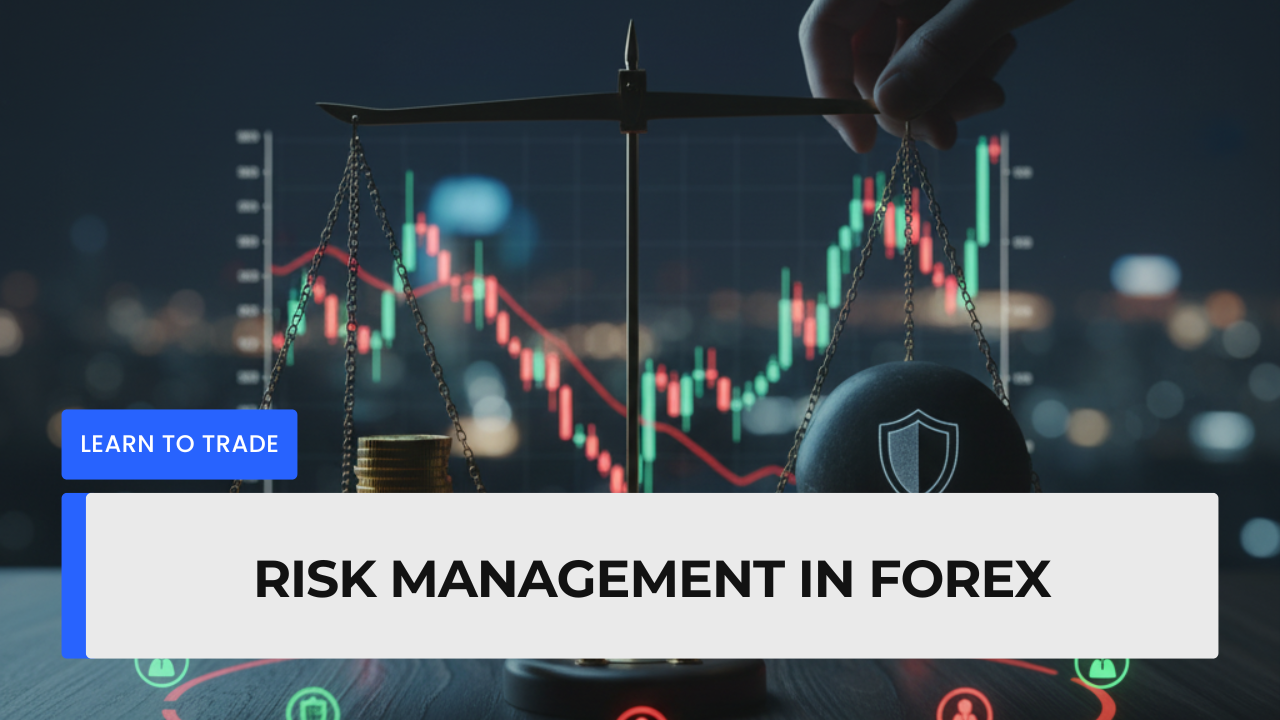Protecting Your Capital and Trading Smart
In forex trading, success isn’t just about making profits — it’s about protecting what you already have.
Even the best strategy can fail if you don’t manage your risk properly.
That’s why risk management is the foundation of every successful trader’s plan.
It helps you control losses, protect your capital, and trade with confidence instead of emotion.
Let’s explore the key principles of risk management every trader should know.
Why Risk Management Matters
Forex trading offers opportunity — but also volatility.
Without a plan to control losses, even one bad trade can wipe out days or weeks of progress.
Good risk management means:
Limiting losses to a manageable amount
Preserving capital for future trades
Staying consistent — no emotional overtrading
Building long-term growth instead of chasing quick wins
Example:
A trader who risks 1% of their account per trade can survive 10 losing trades and still have 90% of their capital intact.
But a trader who risks 10% per trade could lose half their account in just five losses.
Pro Tip: Protecting your account is your first job — profits come second.
Position Sizing — Controlling How Much You Risk
Position sizing determines how large your trade should be based on your account size and risk tolerance.
It’s how you make sure that no single trade can cause significant damage to your balance.
How to Calculate Position Size
Decide your risk percentage per trade (e.g., 1% or 2% of your total account).
Determine your stop-loss distance in pips.
Use a position size calculator (available on most broker platforms).
Example:
If you have a $1,000 account and risk 2%, your maximum risk per trade = $20.
If your stop-loss is 50 pips, you can trade a position size where each pip = $0.40.
Tip: Adjust your trade size — never your stop-loss — to control risk properly.
Risk–Reward Ratio — Balancing Profit and Loss
The risk–reward ratio (RRR) measures how much you’re willing to risk compared to how much you aim to earn.
Example:
If you risk 50 pips to make 100 pips, your risk–reward ratio is 1:2.
That means for every $1 you risk, you aim to gain $2.
Even if you win only half your trades, a 1:2 ratio can still make you profitable over time.
| Trade | Risk (pips) | Reward (pips) | Ratio | Result |
|---|---|---|---|---|
| 1 | 50 | 100 | 1:2 | Win |
| 2 | 50 | 100 | 1:2 | Lose |
| 3 | 50 | 100 | 1:2 | Win |
Net Result: +100 pips overall — profitable despite a 66% win rate.
Pro Tip: Always aim for at least 1:2 or higher to stay profitable long term.
Using Stop-Loss and Take-Profit Wisely
Stop-loss and take-profit orders are your automatic risk management tools.
They ensure you don’t have to constantly monitor trades or make emotional decisions.
Stop-Loss
A stop-loss closes your trade automatically if the market moves against you beyond a set level.
It limits how much you can lose on any single trade.
Example:
Buy EUR/USD at 1.1000 with a stop-loss at 1.0950 — your maximum risk = 50 pips.
Tips for Setting a Stop-Loss:
Don’t place it too tight — allow natural price movement.
Avoid placing it directly on round numbers (like 1.1000).
Base it on technical levels (support, resistance, or volatility).
Take-Profit
A take-profit automatically closes your position when your target is reached.
It locks in profit and prevents you from holding trades too long.
Example:
If your take-profit is 100 pips above your entry, once that target hits, your position closes and profit is secured.
Tips for Setting a Take-Profit:
Align it with your risk–reward ratio (e.g., 1:2).
Don’t move your target out of greed — stick to your plan.
Pro Tip: Combine stop-loss and take-profit for balanced control — your risk is fixed, and your reward is clear.
Building a Risk Management Mindset
Even with the right tools, true risk management starts with discipline.
Key Habits:
Never risk more than 1–2% per trade.
Keep emotions out of trading decisions.
Use a trading journal to track wins, losses, and mistakes.
Focus on consistency, not perfection.
Key Takeaways
✅ Risk management protects your capital and keeps you trading longer.
✅ Use position sizing to control exposure.
✅ Maintain a 1:2 risk–reward ratio or better.
✅ Always use stop-loss and take-profit orders.
✅ Discipline and patience are your strongest tools.
Final Thoughts
Forex trading is a marathon, not a sprint.
Without risk management, even the best strategy can lead to losses.
But with a strong plan, you can turn market volatility into opportunity — while keeping your capital safe.
At Holo Forex, we teach traders to trade smart, not just fast.
Because in the end, consistent profits come not from luck — but from discipline, control, and risk awareness.


